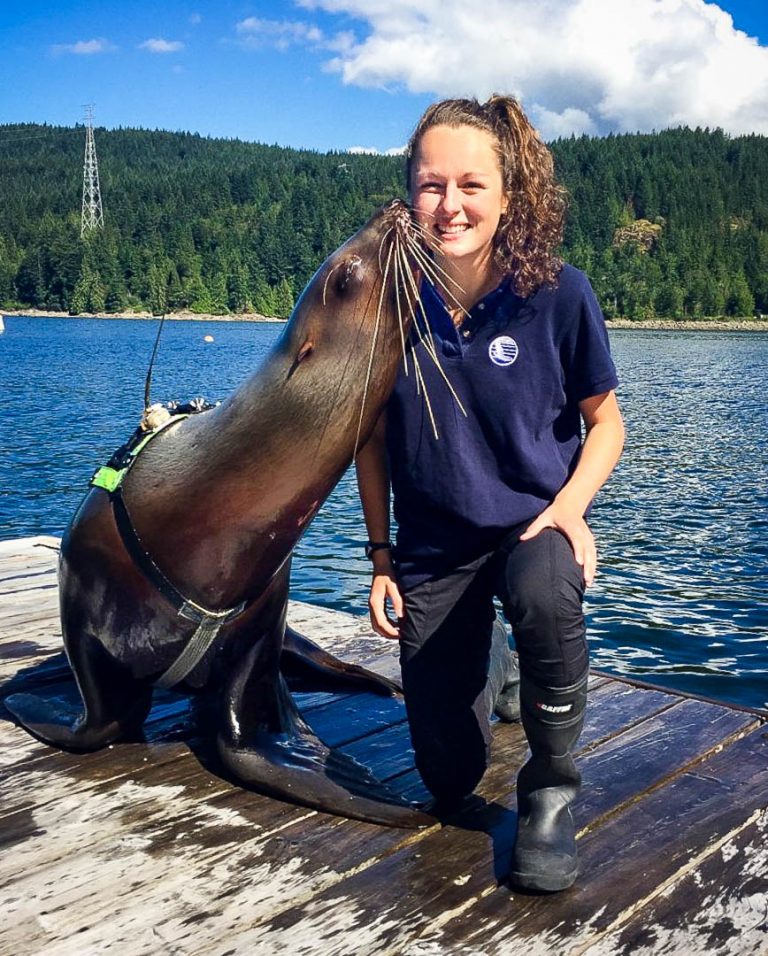
How fat is that sea lion?
Estimating the body condition of Steller sea lions may be as simple as pushing a button
Unlike humans, the more body fat a Steller sea lion has, the better off it is. Scientists working to understand the reasons for the decline of Steller sea lions in the wild have long recognized that body condition is an important measure of overall health and food intake. However, there is no simple means to assess the condition of Steller sea lions in the field—but a simple solution might be at hand.
Brianna Cairns, an undergraduate at UBC, has been testing whether a commercially available FatMeter can accurately determine the body condition of Steller sea lions.
The FatMeter is a small, hand-held device that uses the attenuation of low-level microwaves to instantaneously measure the fat content of commercial fish and meats. The method is somewhat akin to how a bathroom scale estimates your percentage fat. Brianna wanted to know whether this same sort of technology could be repurposed to predict the total body fat of Steller sea lions.
Brianna conducted a pilot study with the Consortium’s sea lions at the Vancouver Aquarium and the Open Water Research Station. Initial results are promising, and suggest that the FatMeter can provide a quick, inexpensive way of measuring the body fat of sea lions in the field. Brianna hopes to expand the project after she completes her undergraduate B.Sc. degree this winter.
The FatMeter experiment was not Brianna’s first encounter with Steller sea lions. In fact, she was first introduced to them when her high school class came to visit UBC’s Open Water Research Station. She credits this experience with encouraging her to pursue an undergraduate degree in marine sciences at UBC. This in turn led to a summer NSERC scholarship working at the Open Water Station in 2016 — and an opportunity to undertake her own research with the Consortium sea lions for her Honors project under the supervision of Dr. David Rosen.
Brianna Cairns is a Undergraduate Student at UBC
